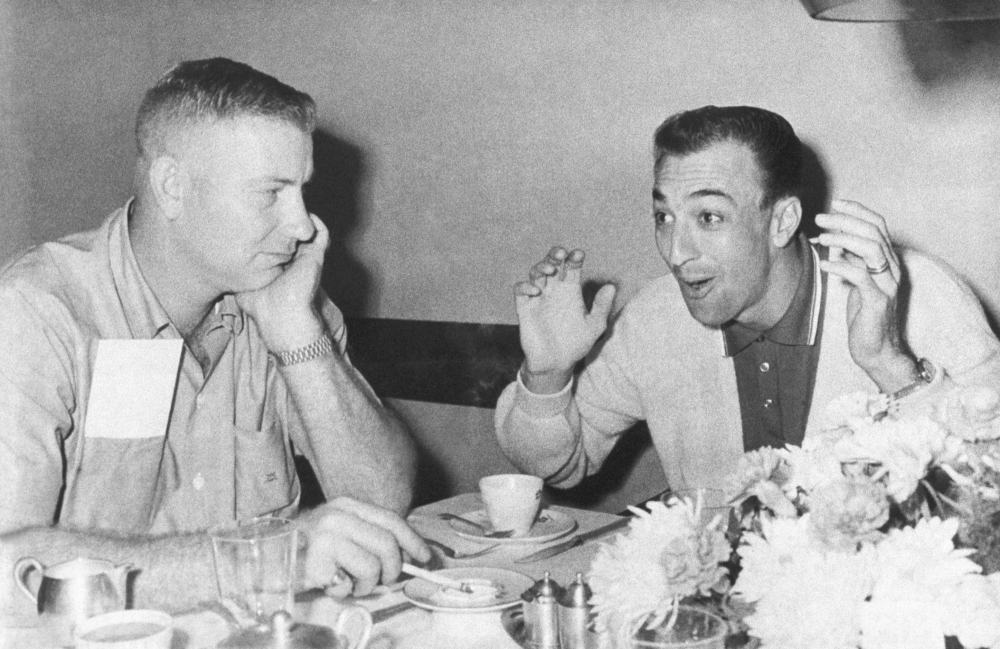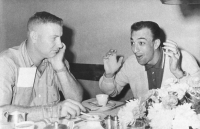This season’s Japan Series will be an exclusively Kansai affair between the Hanshin Tigers and Orix Buffaloes.
The series between the Central League champion Tigers, who play at historic Koshien Stadium in Nishinomiya, Hyogo Prefecture, and the Buffaloes, who play just over 20 minutes away — on a rapid express train, at least — at Kyocera Dome Osaka, will mark the second time the Japan Series has featured two clubs from the Kansai region and the first time since 1964.
The series begins on Saturday night in Osaka and the coming days are likely to be littered with references to the '64 Series between the Tigers and Nankai Hawks, a precursor to the Fukuoka SoftBank Hawks, who played at Osaka Stadium from 1950 to 1988.
That series included players such as Hanshin slugger Kazuhiro Yamauchi and pitcher Minoru Murayama, who were both inducted into the Japanese Baseball Hall of Fame after their playing days. Nankai featured catcher Katsuya Nomura, who went on to become one of the most celebrated figures in Japanese baseball history. It ended with the Hawks winning Game 7 on Oct. 10, 1964, the same day as the opening ceremony for the Tokyo Olympics.
Perhaps some will also remember Gene Bacque and Joe Stanka, a pair of American pitchers who found themselves playing baseball in Japan in the mid-60s and experienced the high points of their careers at the same time in one of the best pairings of foreign aces the Japan Series has seen.
The 1964 Tigers featured a two-headed pitching monster in Murayama, who had won the Sawamura Award in 1959, and Bacque. While Murayama would win two more Sawamura Awards, in 1965 and 1966, Bacque had the superior numbers in 1964.
Bacque, a right-hander from Lafayette, Louisiana, had played six seasons in the minor leagues in North America before joining the Tigers in 1962. He adapted to life in Japan and became one of the most successful foreign pitchers in NPB history, sharing the record for most wins by a foreign (under NPB’s designation of foreign) player (100) with Stanka.
He was 29-9 with a 1.89 ERA and 1.06 WHIP in 353⅓ innings during the 1964 season and became the first foreign recipient of the Sawamura Award. He was the only foreign winner until the Hiroshima Carp’s Kris Johnson in 2016.
"When Kris won it and realized I had won it, I read where he said, 'I'm not in the same ballpark with this guy,'" Bacque told Glenn Guilbeau of Lafayette's Daily Advertiser in a 2017 interview. "I appreciated that. Now, they pitch four or five innings, and they take you out whether you're ahead or not. When I pitched, we'd usually go nine."
Before his death in 2019, Bacque had become close with former Tigers pitcher Randy Messenger, who was with the team from 2010 to 2019 and fell two victories short of the 100-win club.
On the Nankai side was Stanka, a big, hulking righty from Hammon, Oklahoma, who was later dubbed “Big Thunder” by the Japanese media and cut an imposing figure on the mound. Stanka spent his career in the minor leagues but made two MLB appearances with the Chicago White Sox in 1959.
“He was a tall person,” former Yomiuri Giants great Sadaharu Oh told Sports Nippon after Stanka’s death at age 87 in 2018. “He was quiet, but he had a fighting spirit.”
Stanka arrived in Japan in 1960, posting a 2.48 ERA over 240 innings. He made three starts and two relief appearances against the Giants in the Hawks’ losing effort in the 1961 Japan Series. Stanka’s temper flashed in that series when, upset over a perceived missed call, he knocked over an umpire and started a mini-riot on the field that needed police intervention. Stanka was given the Fighting Spirit prize as the best player from the losing side.
Like Bacque, he had a standout 1964 season with a 26-7 record and 2.40 ERA and was named Pacific League MVP. Stanka pitched in Japan from 1960 to 1966 and was the first foreign pitcher to 100 wins.
While the two Americans each made multiple appearances during the 1964 Japan Series, their paths only crossed once as starters. Stanka got the best of that matchup, in Game 6, allowing just two hits in a 99-pitch shutout. Bacque was tagged with three runs in four innings.
In Game 1, Stanka threw a three-hit shutout, and retired Yamauchi in all four of his at-bats to get the Hawks off to a fast start in the series on the road at Koshien Stadium.
Bacque took the mound for the Tigers in Game 2 and recorded a complete-game victory.
Stanka started and lost Game 3 before the Americans met as starters in Game 6.
Bacque made five appearances in the ’64 series, starting Games 2 and 6 and pitching in relief in Games 3, 5 and 7. He allowed six runs in 21⅔ innings
Stanka started Games 1, 3, 6 and 7 for the Hawks. He helped Nankai secure the title with consecutive shutouts — on consecutive days — on the road in the final two games of the series, allowing seven hits and striking out 16 in those 18 innings. Altogether he allowed four earned runs — all in Game 3 — in 29⅓ innings to earn series MVP honors.
The game has changed too much to expect either Orix ace Yoshinobu Yamamoto, Japan’s best pitcher, or Tigers rookie Shoki Murakami, who led the CL with a 1.75 ERA, to pitch nearly as much as Bacque or Stanka — or even Murayama, who made three starts of his own.
Perhaps among the various remembrances of the first “Kansas Series” that may surface beginning when the series starts on Saturday, there will be room to also remember two of NPB’s best-ever foreign pitchers and the roles they played in it.




